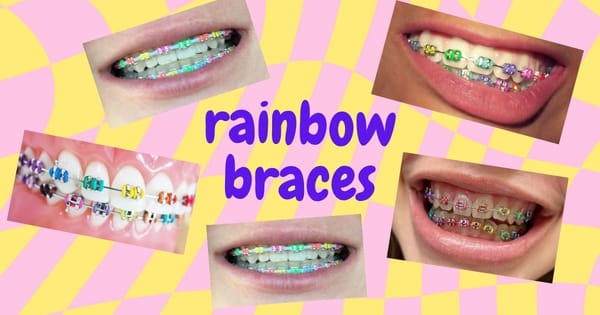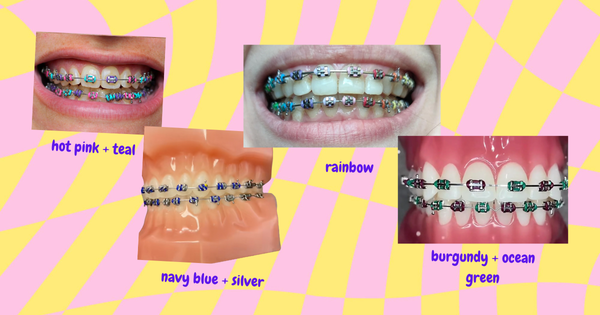Emma Stone's Smile: A Subtle Transformation with Veneers?

Emma Stone, the Academy Award-winning actress known for her infectious energy and comedic charm, has a smile that is as captivating as her talent.
Her bright eyes and dazzling smile light up the screen, leaving audiences charmed.
But throughout her career, there have been subtle changes in her smile, prompting speculation about whether she has embraced dental work to enhance her already radiant features.
Based on available photos and expert analysis, Emma Stone appears to have had veneers placed sometime around 2017, possibly during the "La La Land" era.
The changes in her teeth, including a more uniform incisal edge and altered shape
Dental Analysis: Tracking Emma Stone's Smile Evolution
To understand the potential dental work behind Emma Stone's smile transformations, let's delve into the specific changes observed in her teeth throughout the provided photos.
A Closer Look at the Evidence:
- Early Days: Natural Teeth with Distinctive Features: Photos from around 2006 showcase Emma Stone's natural teeth, revealing unique characteristics that distinguish them. The speaker, a dental professional, highlights her triangular teeth, particularly the lateral incisors, which appear shorter than her central incisors, and the presence of mammalons on her lower teeth. These features are commonly seen in newly erupted teeth.
- The "La La Land" Era: The Debut of Veneers? Moving forward to the "La La Land" era, which is likely around 2017, a noticeable shift in Emma's smile becomes apparent. The speaker observes a more uniform incisal edge, a fuller appearance, and a subtle change in the position of her lateral incisors. These subtle but significant alterations suggest the potential for veneers, as they create a more sculpted and balanced smile.
- Possible Second Set of Veneers Between 2018 and 2024: Photos from later years, likely between 2018 and 2024, suggest a possible second set of veneers. The speaker notes that her teeth appear slightly longer, rounder, and possibly extending to her first premolars, creating a fuller smile.
Understanding the Reasons for Smile Transformations:
- The Desire for a Whiter, More Uniform Smile: Like many individuals, Emma Stone may have sought a whiter and more uniform smile, a common motivation for veneers.
- Potential Concerns about Tooth Shape and Size: The changes in Emma's teeth, particularly the altered shape and position of her lateral incisors, might also indicate a desire to address specific concerns about tooth shape or size.
- Aesthetics and Confidence: Veneers can significantly enhance a person's smile, potentially boosting their self-confidence. Emma's decision to embrace these procedures suggests a desire to feel more confident about her appearance.

Veneers: What They Are, Different Types, and the Process
Now that we've explored the potential evidence of veneers in Emma Stone's smile transformations, let's take a deeper dive into what veneers are, why people choose them, and how the process works.
What are Veneers?
Veneers are thin, custom-made shells of porcelain or composite material that are bonded to the front surfaces of teeth to improve their appearance.
They are a popular choice for people who want to:
- Correct Discoloration: Veneers can cover up stains, chips, or other imperfections that make teeth appear discolored.
- Improve Tooth Shape: Veneers can reshape teeth that are misshapen, chipped, or uneven.
- Close Gaps: Veneers can be used to close small gaps between teeth, creating a more uniform smile.
- Enhance Smile Aesthetics: Veneers can help create a more symmetrical and balanced smile by improving the overall shape, size, and alignment of teeth.
Types of Veneers:
There are several types of veneers, each with its own advantages and disadvantages:
- Porcelain Veneers: Known for their durability, resistance to staining, and natural-looking appearance. They are a good option for patients who want a long-lasting solution.
- Composite Veneers: Made from a tooth-colored resin material, composite veneers are a more affordable option than porcelain. They are also less invasive, as they typically require less tooth preparation. However, composite veneers are not as durable as porcelain and may need to be replaced sooner.
- Lumineers: These are ultra-thin, pre-made veneers that require minimal tooth preparation. They are a less invasive option than traditional veneers but may not be suitable for all patients.
The Veneer Process:
Getting veneers typically involves the following steps:
- Consultation and Planning: A dental professional will assess your teeth and discuss your goals for your smile. They will take impressions of your teeth and create a mock-up of the proposed veneers to ensure you are satisfied with the planned results.
- Tooth Preparation: The dentist will prepare the front surface of your teeth by removing a small amount of enamel to create space for the veneer.
- Veneer Fabrication: The impressions taken during the consultation are used to create custom-made veneers in a dental lab.
- Veneer Placement: The dentist will carefully place the veneers onto the prepared teeth and bond them in place. This involves using a special light-curing adhesive and a bonding agent to create a strong and lasting bond.
- Aftercare: You will need to maintain good oral hygiene habits, including regular brushing, flossing, and dental checkups, to ensure the longevity of your veneers.

Cost Considerations and Alternatives to Veneers
While veneers can be a transformative treatment, they can also be a significant investment.
Let's explore the factors that influence the cost of veneers and discuss some alternatives for those seeking to enhance their smiles without the high price tag.
Cost of Veneers:
The cost of veneers can vary widely, depending on factors such as:
- Location: Dental costs can differ based on geographic location.
- Material Used: Porcelain veneers are typically more expensive than composite veneers.
- Number of Teeth Treated: The cost will increase with the number of teeth being treated.
- Dentist's Fees: Each dentist sets their own fees.
Estimated Costs (Generalized):
- Porcelain Veneers: $900 - $2,500 per tooth
- Composite Veneers: $300 - $1,000 per tooth
Alternatives to Veneers:
- Composite Bonding: This procedure involves applying a tooth-colored composite resin material to the surface of a tooth to improve its appearance. It's a less invasive and more affordable option than veneers.
- Teeth Whitening: Professional teeth whitening can significantly brighten the color of teeth, addressing discoloration concerns.

The Beauty of a Unique Smile
Based on the available evidence and expert analysis, Emma Stone's smile has evolved over time, suggesting the use of veneers at different points in her career.
The speaker, a dental professional, notes the subtle but significant changes in her teeth, highlighting the artistry and craftsmanship involved in achieving a natural-looking outcome.
While veneers can dramatically enhance a smile, it's important to remember that every smile is unique, and the most beautiful smiles reflect a person's confidence and individuality.
If you are considering veneers or any other dental treatment to enhance your smile, consult with a qualified dental professional.
They can provide personalized advice, discuss treatment options, and help you achieve the smile you desire, one that reflects your personality and enhances your self-confidence.





